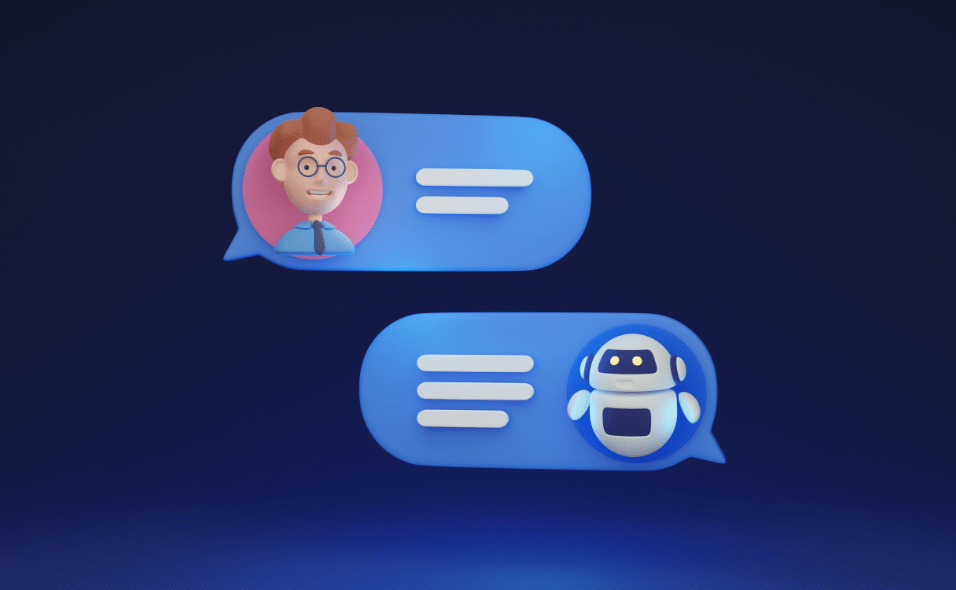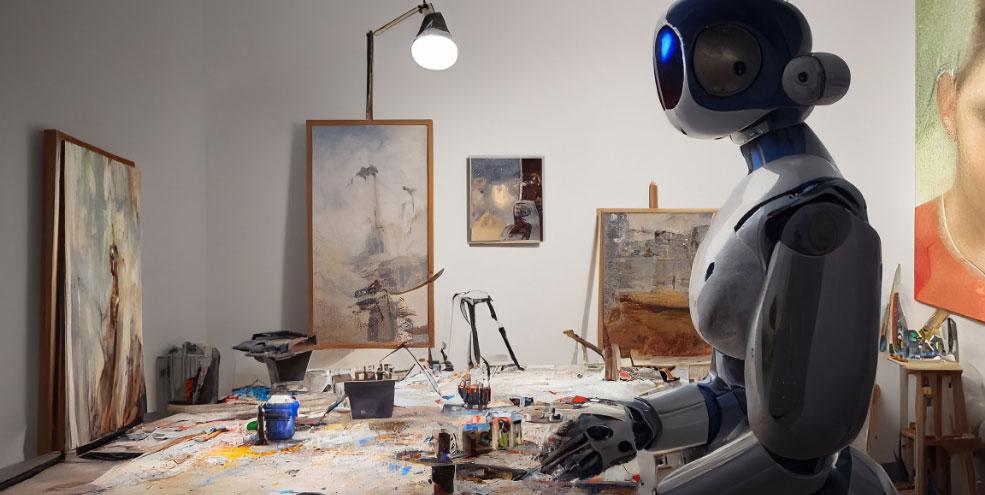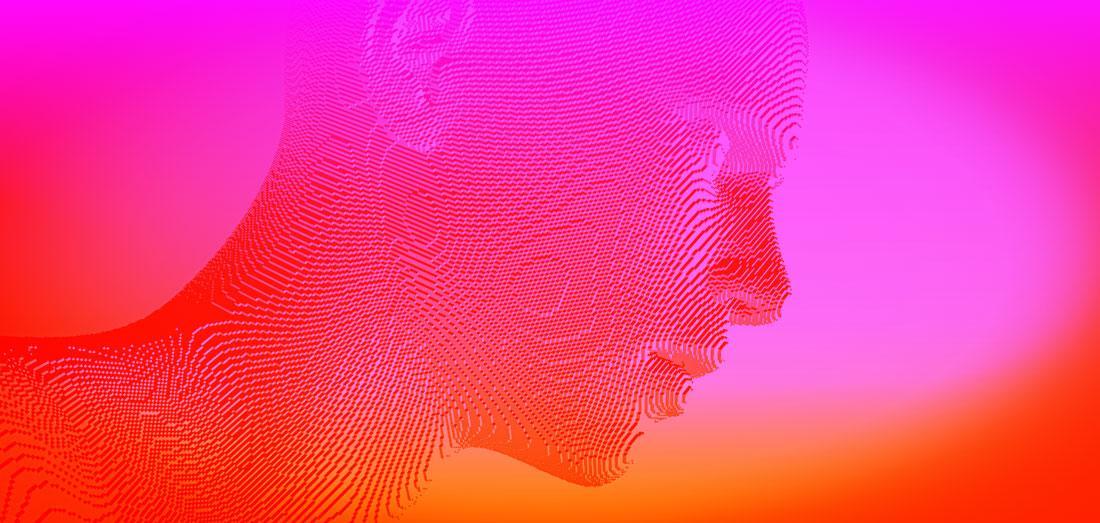The impact of artificial intelligence on advertising creative and visual design
Last month, Modern Impact published Part 1 of its commentary on the expanding application of artificial intelligence. Even in the few weeks since then, there’s a plethora of new “news,” a variety of new pundits leaning both for and against AI, and a wealth of tech companies are still ignoring the plea of Elon Musk and 1,000 other business leaders to pause on its development.
Why? Because it’s fun. It’s sexy. It’s trendy. In the world of the 24-hour news cycle, effective marketing and popular culture often mirror each other. Every year, new trends and buzzwords take over both. Last year, it was NFTs and anything blockchain. This year, it’s artificial intelligence (AI).

Given the notoriety of ChatGPT and other open AI platforms, it’s likely you’ve seen (and even tried) these engines “out in the wild.” That’s great. We should all be keeping an eye on AI. But while recent media attention might lead you to believe this tech is brand new, the truth is, it’s not. We’ve been teaching computers to think like humans since the early 1950s.
In those days, efforts were limited by both computing power and a lack of available data. So, the theoretical nature of those projects was like trying to map the inside of a cave by looking at the entrance. In other words, early engineers relied more on imagination than investigation.
Fast forward through the next 60-plus years, and AI has made a quantum leap in mimicking human decision-making processes to arrive at today’s preeminent AI protocol: Deep Learning. Utilizing “neural” networks tapped into enormous troves of data, deep learning enables machines to reach human-like performance in speech identification and image recognition. It’s what makes Alexa so easy to chat with and Chat GPT so good at writing your basic term paper.
But before we start worrying about robots replacing half the jobs we humans hold now – or conspiring to take over the world – deep learning will have to evolve creatively and significantly. As AI becomes more advanced, it’s also becoming more communicative, but today’s AI still gets most of its power from the ones and zeros of binary code – which limits its ability to conceptualize.
While these tools can gather all the data in the world and tell you what it says, they can’t tell you what it might mean. Insight, interpretation, ideation, and initiative are still innately human traits.
Artificial intelligence has yet to bridge the gap between what is and what could be; to explore the spaces between black and white and find new colors in the gray. As Modern Impact’s VP of Strategy, Eric Tepe, recently remarked,
“The ability to see beyond what already exists, turn information into ideas and imagine something entirely new is still a human talent.”
So, while AI can help inform our practical business decisions, brand and creative decisions dependent upon the effective interpretation and application of those insights is still up to us.
As MI CEO, Michael Priem, has often said,
“Marketing is more than just a fact-based debate, and you can’t argue your way into the hearts of your customers. Human beings are still human, which means despite our desire to appear rational, we still make most of our decisions based on emotion and then try to justify them with logic.”
Ask ChatGPT to write a haiku about driving a luxury automobile, and you’ll get three lines on the right topic with the right syllable count. But I doubt you’d call it poetry. The power of persuasion rests on our ability to craft nuanced, intuitive messages that connect on a personally compelling level and truly move our audience (both emotionally and to take action). And that’s something AI just can’t do. Yet.
So, responsible application of artificial intelligence in marketing may help you tell your brand story – but shouldn’t be relied upon to write it. Attribution should be top of mind for anyone looking to include AI in media, creative or brand strategy. In their current iterations, these engines pull exclusively from existing material out there on the net. So, that means you have to triple-check the authenticity of your content and the potential of outright copyright infringement.
That said, there are a number of ways in which today’s AI is being employed effectively in the creation of more compelling creative and design work. At MI, we believe real impact is delivered at the intersection of art and science – where creatives and media experts collaborate to create highly relevant content, and AI is making that outcome more likely.

There are already generative AI platforms in the fields of art and design trying to compete with human creativity – such as Stable Diffusion, Dall-E and MidJourney. Building experience through user-generated prompts, these engines evolve to become more accurate (and creative) with every input. In fact, these systems are already winning art competitions previously won only by human artists.
So, it’s understandable that these AI platforms can make many designers question the future of their craft.
But Modern Impact Art Director, Eric Heggernes, has a different perspective:
“I see AI as a way to unlock new perspectives that creators can tap into. Does that mean I think we’re all going to lose our jobs to machines? Not really. AI is still input-driven and logic-based, so true art – and effective advertising – still rely on creative interpretation.”
And while AI art is relatively fresh and interesting, most artist’s reactions are lukewarm. “Frankly, the arts world has a long history of gatekeepers, debates over new media and expanding upon the ideas of others – which is what today’s AI is really doing,” Heggernes said.
“I wonder if the first cave drawers complained that when fellow artists began to use a stick to draw instead of their fingers it was somehow de-humanizing the artform. If you don’t bleed for your art, is it even art?” Heggernes joked.
We are witnessing a unique evolutionary stage in artificial intelligence. In real terms, its quantitative powers are beyond any human scale. However, qualitative reasoning is still beyond the scope of open AI engines; the ability to look ahead, to turn new information into new ideas, to feel.
Advertising has seen new gadgets before and what some consider a paradigm shift is a flash in the pan for others. Modern Impact designer, Dani Loomis, leans toward the latter.
“Temporarily, people might think that they don’t need to hire a designer. But it’s not foolproof. Society embraces these kinds of tools out of a desire for efficiency, but they aren’t collaborative. I think the obsession with AI in creative will be a passing movement that eventually puts human designers back at the forefront,” Loomis said.
“That, or this is the end of the world,” Loomis joked.
And what about the written word? Content development may actually be the first place in which we see more practical applications. AI could be useful in generating and testing various permutations of your existing brand creative to help drive media performance. It may be possible to automate the enrichment of your site with more consistent content – something that can often be labor intensive – by asking AI to perform initial iterations that are then edited and enhanced by key members of your team.
We’re also seeing some employment of these capabilities in other marketing categories that focus largely on repetitive, data-driven tasks. For instance, Justin Smith, who leads website design and development for Modern Impact, recently utilized ChatGPT on a trial basis for some basic code writing and was generally impressed with the results.
As AI continues to seep into every industry, human interaction and behavior become divisive factors in business development. Successful marketing must relate to the real-life experiences of consumers. What we need to remember is, with all the data in the world, only a human being can craft it into truly emotive, engaging, effective advertising.
We may have taught computers how to think but, for now, only humans can imagine and feel.


